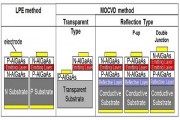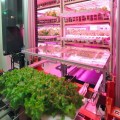 2022-05-25
2022-05-25
TOKYO, May 24, 2022 - (ACN Newswire) - Showa Denko (SDK) (TOKYO: 4004) proposed its "Project to Develop SiC Wafers Technology for Next-generation Green Power Semiconductors(1)" (hereinafter "the Project") to New Energy and Industrial Technology Development Organization (NEDO) as a candidate for "Projects to Develop Wafers Technology for Next-generation Power Semiconductors" which was set as a research and development target of "Next-generation Digital Infrastructure Construction(2)" in "Green...
Continue reading →
2021-09-28
TOKYO, Sept 28, 2021 - (JCN Newswire) - Showa Denko K.K. (SDK; TSE:4004) concluded a long-term supply contract with Toshiba Electronic Devices & Storage Corporation (Toshiba), a Japanese electronic device manufacturer providing highly efficient SiC-power-semiconductor based power devices for the global market, to supply SiC epitaxial wafers for power semiconductors (SiC epi-wafers) for two and a half years with an optional extension clause.
Toshiba has been developing and commercializing various kinds of SiC-based power devices including inverters f...
Continue reading →
 2017-08-23
2017-08-23
Showa Denko (SDK) has expanded its product lineup of infrared LED chips (IR-LEDs), which are mainly used as parts of photo-couplers for gate drivers in power semiconductor modules and parts of sensors for IoT-related devices.
Continue reading →
2014-04-28
Showa Denko announces that its proprietary LED lighting equipment and high-speed plant growth technology (Shigyo MethodTM) have been adopted by Gushiken Co., Ltd., a major bread maker in Okinawa. The company, led by President Hisao Gushiken, is headquartered in Uruma City, Okinawa Prefecture.
Continue reading →
2013-11-25
Showa Denko K.K. has developed a light source similar to blue LEDs through a combination of violet, red, yellow, blue, and green LED chips, according to a recent report by Nikkei on November 21st.
Continue reading →
 2013-02-20
2013-02-20
Japanese Chemical engineering firm Showa Denko K.K. has cooperated with Masayoshi Shigyo, a professor at Yamaguchi University’s Faculty of Agriculture, to develop new LED lighting technology to spur plant growth in factory controlled conditions, by changing the blue-red ratio through each stage of a plant's development. The technology shortens the growth period of leaf lettuce, for example, to two weeks from three weeks using conventional methods. With growing corporate interest in the vegetable factory business, Showa Denko said the new technique offers si...
Continue reading →
2010-12-02
Showa Denko K.K. (SDK) has published their 2011-2015 business plan. Their R&D strategy includes four priority items, one of them being OLED Lighting. Their plan is to produce 80lm/W 40,000 hours white OLEDs in 2015. They say that the cost will be ¥4 per lm - which means $3.8 for the 80lm/W device - but they do not specify the size (area) of those OLEDs.
Continue reading →
2008-12-19
AIXTRON AG, a leading provider of deposition equipment to the semiconductor industry, is pleased to announce an order for a MOCVD system from Showa Denko K.K., a Japan based leading manufacturer of Ultra-High-Brightness (UHB) LEDs received in the first quarter 2008.
Continue reading →
2008-10-09
It’s reported that more than half of the 4.6 million 2-inch-equivalent sapphire wafers used for LED growth in 2007 were consumed by Taiwanese companies. The market for sapphire materials in electronic applications looks set to reach $400 million by 2012. Sapphire materials serve two main applications in the electronics field: GaN-based LEDs, and RF switch devices for mobile phones.
Continue reading →
2008-08-13
It’s reported that Showa Denko of Japan, a maker of hard disks and red LEDs, halted plans to expand production of the LEDs and hard disks.According to a Nikkei Net article, in December of 2007, Showa Denko announced plans to double its red aluminum gallium indium phosphide (AlGaInP) LED production to 200 million units per at its operations in Chichibu, Saitama Prefecture by the end of 2008, and the company was planning to spend about 1.2 billion yen to raise the red LED production capacity.
Continue reading →
 2022-05-25
2022-05-25
 2017-08-23
2017-08-23
 2013-02-20
2013-02-20